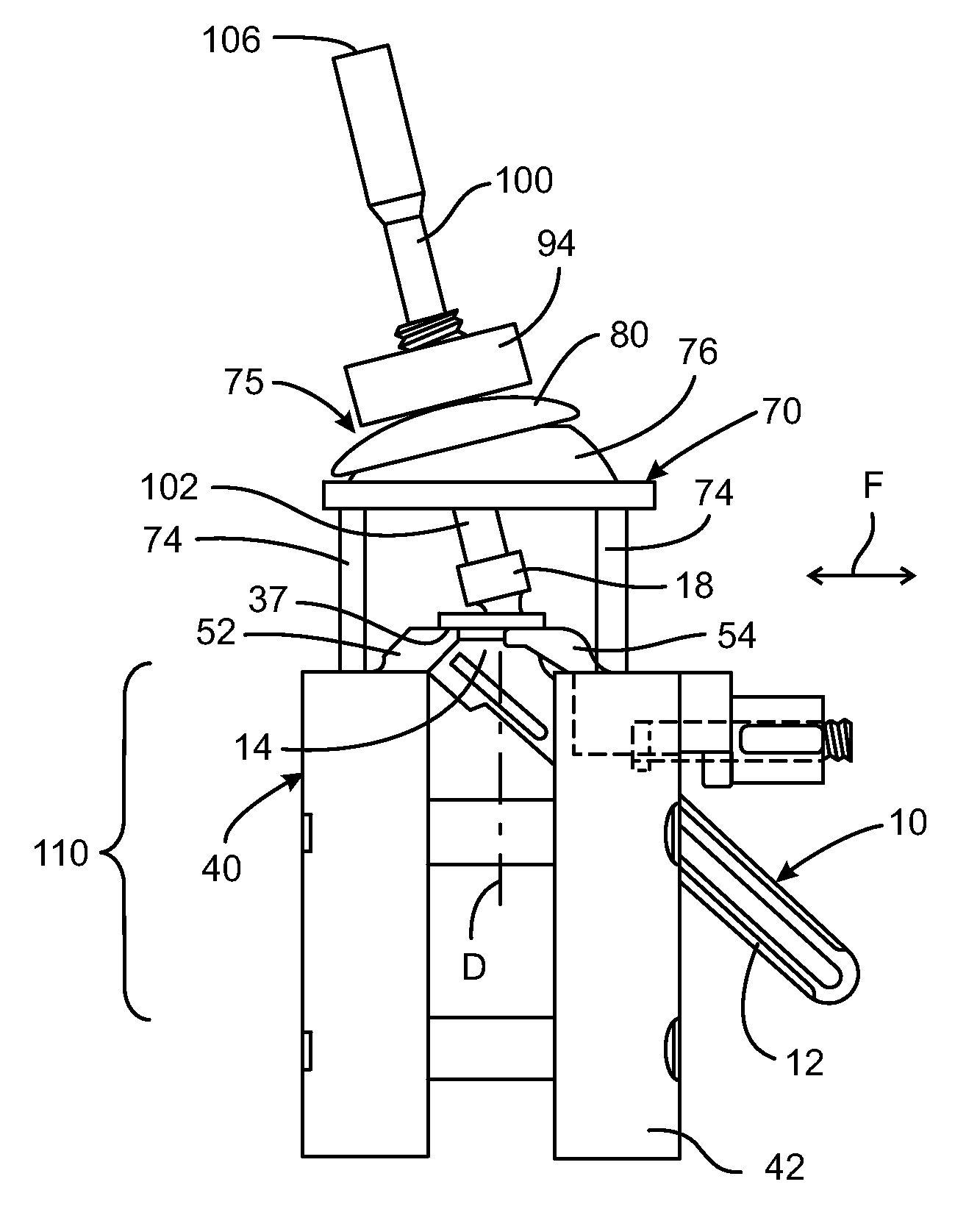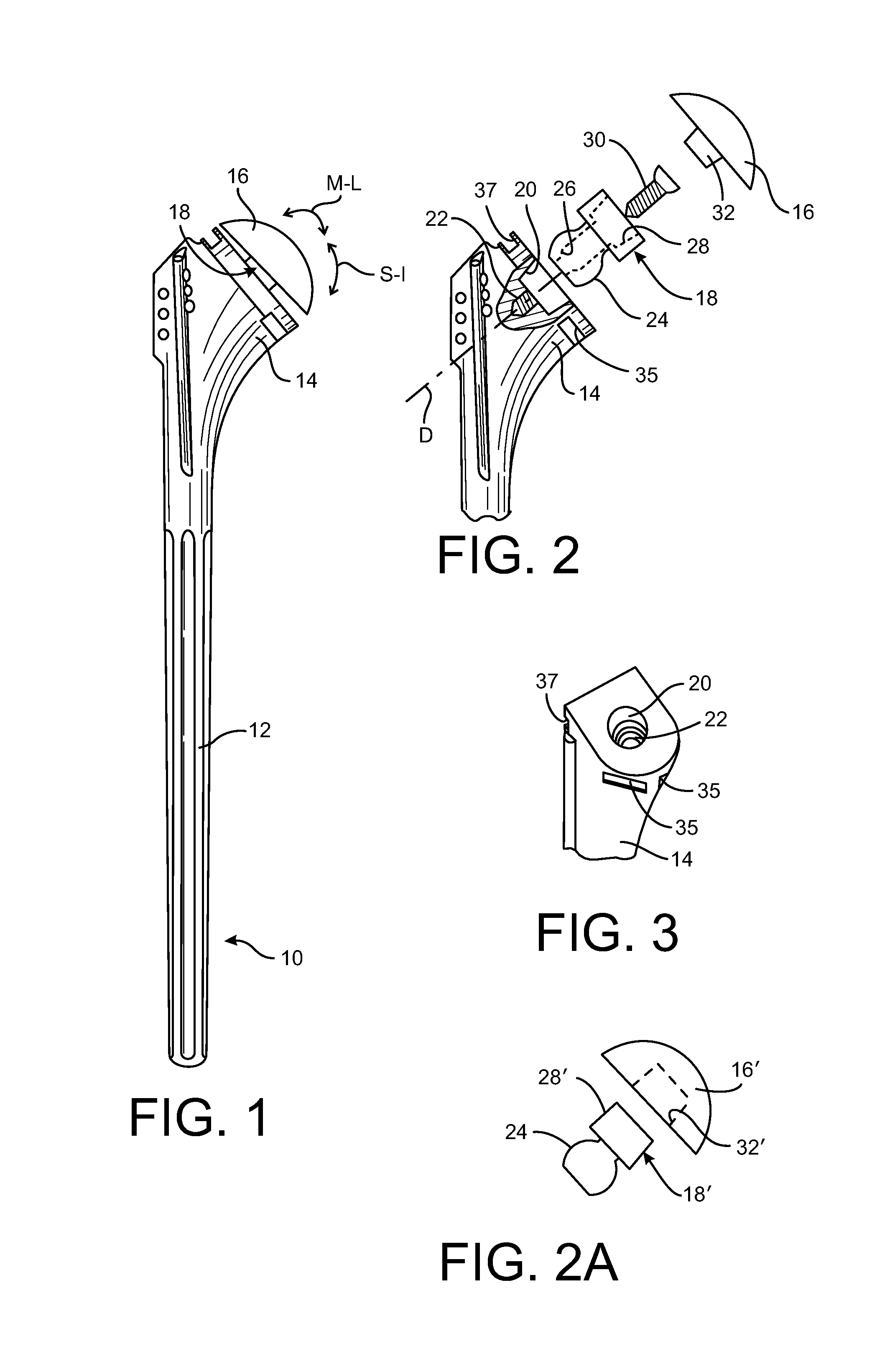Instrumentation for recording and replicating orthopaedic implant orientation
a technology for orthopaedic implants and instruments, which is applied in the field of orthopaedic implants, can solve the problems of inability of surgeons to system, and patient, and achieve the effect of accurately duplicate the orientation or configuration of a trial, and easy preparation of the final implan
- Summary
- Abstract
- Description
- Claims
- Application Information
AI Technical Summary
Benefits of technology
Problems solved by technology
Method used
Image
Examples
Embodiment Construction
[0037]While the invention is susceptible to various modifications and alternative forms, specific embodiments thereof have been shown by way of example in the drawings and will herein be described in detail. It should be understood, however, that there is no intent to limit the invention to the particular forms disclosed, but on the contrary, the intention is to cover all modifications, equivalents, and alternatives falling within the spirit and scope of the invention.
[0038]For purposes of illustration, the preferred embodiment of the invention is described in connection with a shoulder prosthesis, and particularly the humeral component of the prosthesis. However, the inventive concepts disclosed herein can be used at other joints or bone interfaces of the body. The common feature among these alternative uses of the invention is that they include components that can assume a range of angular orientations relative to each other—angular orientations that must be duplicated from a tria...
PUM
 Login to View More
Login to View More Abstract
Description
Claims
Application Information
 Login to View More
Login to View More - R&D
- Intellectual Property
- Life Sciences
- Materials
- Tech Scout
- Unparalleled Data Quality
- Higher Quality Content
- 60% Fewer Hallucinations
Browse by: Latest US Patents, China's latest patents, Technical Efficacy Thesaurus, Application Domain, Technology Topic, Popular Technical Reports.
© 2025 PatSnap. All rights reserved.Legal|Privacy policy|Modern Slavery Act Transparency Statement|Sitemap|About US| Contact US: help@patsnap.com



